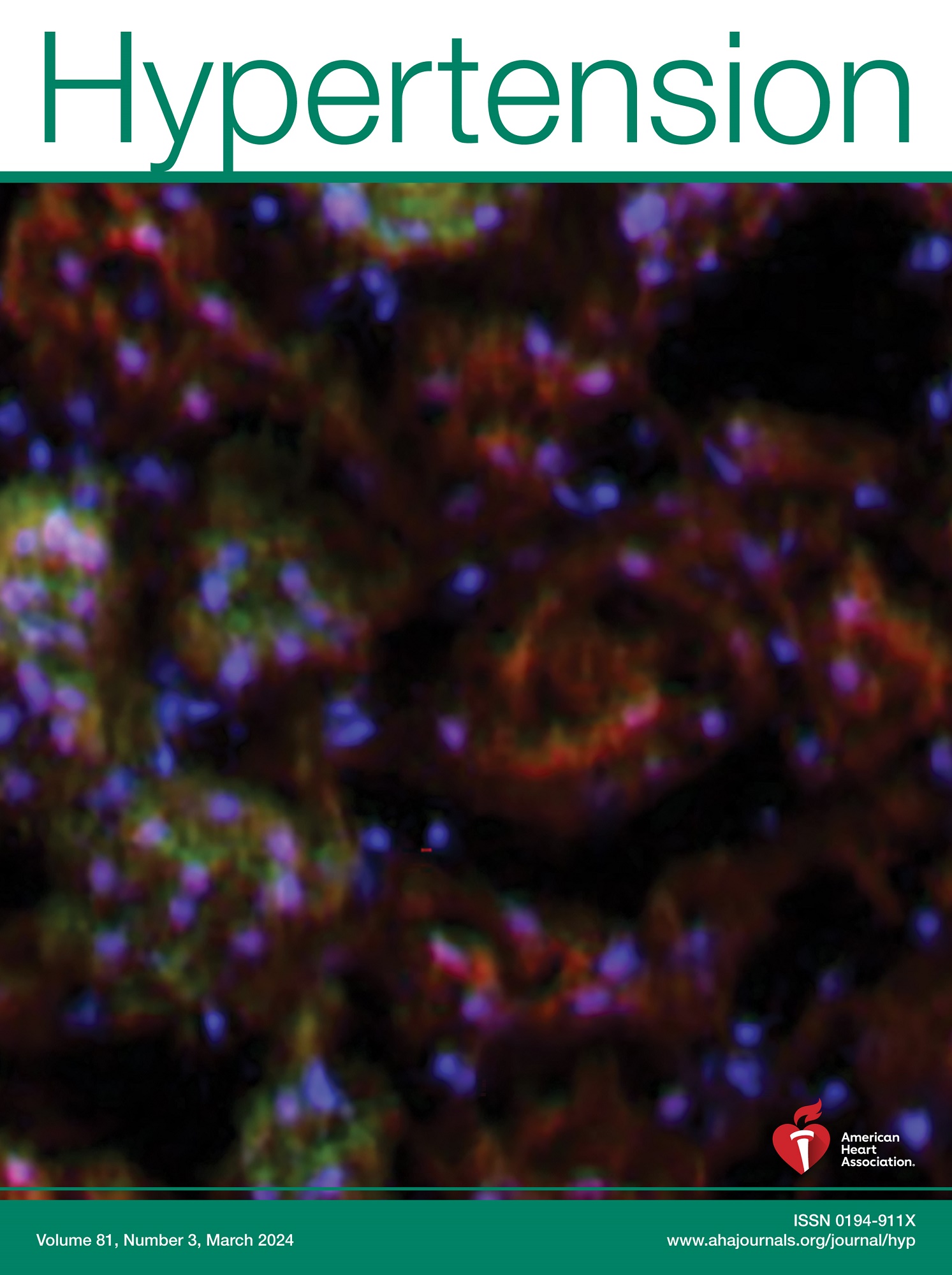Geometric Aging of the Thoracic Aorta: Insights From 2 Large Cohorts.
IF 8.2
1区 医学
Q1 PERIPHERAL VASCULAR DISEASE
引用次数: 0
Abstract
BACKGROUND Aortic structural degeneration occurs with aging; however, 3-dimensional geometric remodeling has not been well characterized in large populations. METHODS We segmented the thoracic aorta from magnetic resonance images of 56 164 UKB (UK Biobank) participants and computed tomography images of 9417 PMBB (Penn Medicine Biobank) participants. We quantified structural measurements of elongation, dilation, tortuosity, and curvature across the thoracic aorta. Multivariate linear regression models estimated the associations between age and aortic structure in a subset of normative healthy participants from the UKB (n=3532), and in the overall cohorts. RESULTS Patterns of aging were highly consistent between the UKB and PMBB. In the UKB normative subset, aging was associated with profound geometric changes, including elongation (β per decade of age, 1.001 cm [95% CI, 0.893-1.110]; P<0.0001), luminal dilation (β per decade of age, 0.870 mm [95% CI, 0.794-0.947]; P<0.0001), and decreased curvature (β per decade of age, -0.060 mm-1 [95% CI, -0.067 to -0.053]; P<0.0001). The strongest relationship with age was observed for aortic volume (β per decade of age, 17.124 mL [95% CI, 15.124-18.386]; P<0.0001). No age-sex interactions were observed in the healthy normative subset, whereas in the overall UKB and PMBB cohorts, females exhibited less pronounced luminal dilation (particularly after menopause) and more pronounced changes in curvature. CONCLUSIONS Aging is associated with profound 3-dimensional geometric changes in the thoracic aorta, including elongation, luminal dilation, and decreased curvature. Females demonstrate less eccentric aortic remodeling and more pronounced changes in curvature, likely contributing to unfavorable pulsatile arterial hemodynamics that are present in older females.胸主动脉的几何老化:来自2个大型队列的见解。
背景:随着时效的增加,结构会发生快速变性;然而,三维几何重构尚未在大种群中得到很好的表征。方法对56 164名UKB (UK Biobank)参与者的磁共振图像和9417名PMBB (Penn Medicine Biobank)参与者的计算机断层图像进行胸主动脉分割。我们量化了胸主动脉伸长率、扩张率、扭曲度和弯曲度的结构测量。多变量线性回归模型估计了UKB标准健康参与者子集(n=3532)和整体队列中年龄与主动脉结构之间的关联。结果UKB和PMBB的衰老模式高度一致。在UKB标准亚群中,老化与深刻的几何变化相关,包括伸长率(β每十年年龄,1.001 cm [95% CI, 0.893-1.110]; P<0.0001),管腔扩张(β每十年年龄,0.870 mm [95% CI, 0.794-0.947]; P<0.0001)和曲率降低(β每十年年龄,-0.060 mm-1 [95% CI, -0.067至-0.053],P<0.0001)。与年龄关系最密切的是主动脉容积(β / 10岁,17.124 mL [95% CI, 15.124-18.386]; P<0.0001)。在健康的规范子集中没有观察到年龄-性别的相互作用,而在总体UKB和PMBB队列中,女性表现出较不明显的管腔扩张(特别是绝经后)和更明显的弯曲变化。结论衰老与胸主动脉的三维几何变化有关,包括延长、管腔扩张和弯曲度下降。女性表现出较少偏心的主动脉重塑和更明显的弯曲变化,可能导致不利的搏动动脉血流动力学存在于老年女性中。
本文章由计算机程序翻译,如有差异,请以英文原文为准。
求助全文
约1分钟内获得全文
求助全文
来源期刊

Hypertension
医学-外周血管病
CiteScore
15.90
自引率
4.80%
发文量
1006
审稿时长
1 months
期刊介绍:
Hypertension presents top-tier articles on high blood pressure in each monthly release. These articles delve into basic science, clinical treatment, and prevention of hypertension and associated cardiovascular, metabolic, and renal conditions. Renowned for their lasting significance, these papers contribute to advancing our understanding and management of hypertension-related issues.
 求助内容:
求助内容: 应助结果提醒方式:
应助结果提醒方式:


